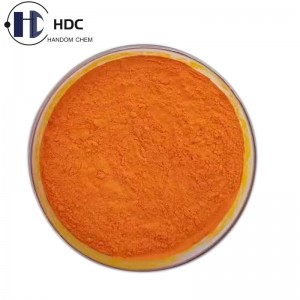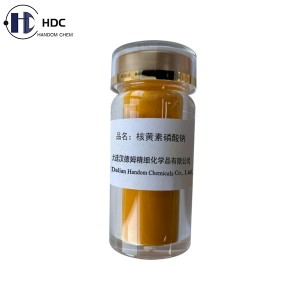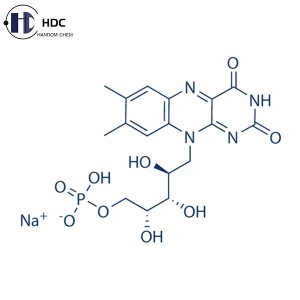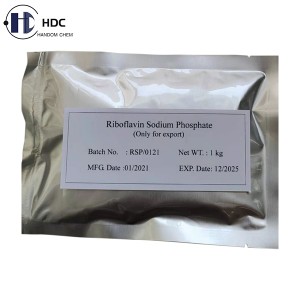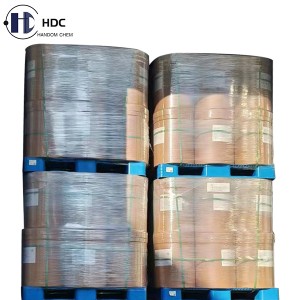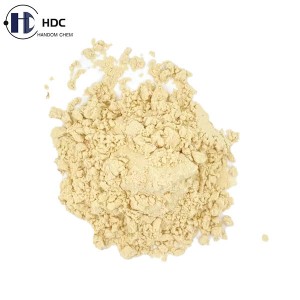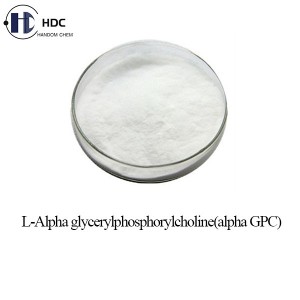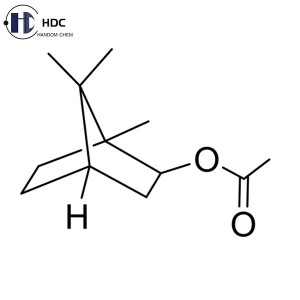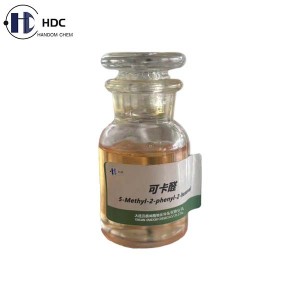Riboflavin Sodium Phosphate

Brief Introduction:
Riboflavin sodium phosphate, the CAS number is: 130-40-5, the molecular formula is: C17H20N4NaO9P, it is also called Riboflavin-5-phosphate sodium, Riboflavin 5'-sodium phosphate or Vitamin B2-5-Phosphate.
Riboflavin sodium phosphate is mainly used to make riboflavin sodium phosphate injection, which is mainly used to treat riboflavin deficiency, it is also used as a food nutritional enhancer and edible yellow pigment.
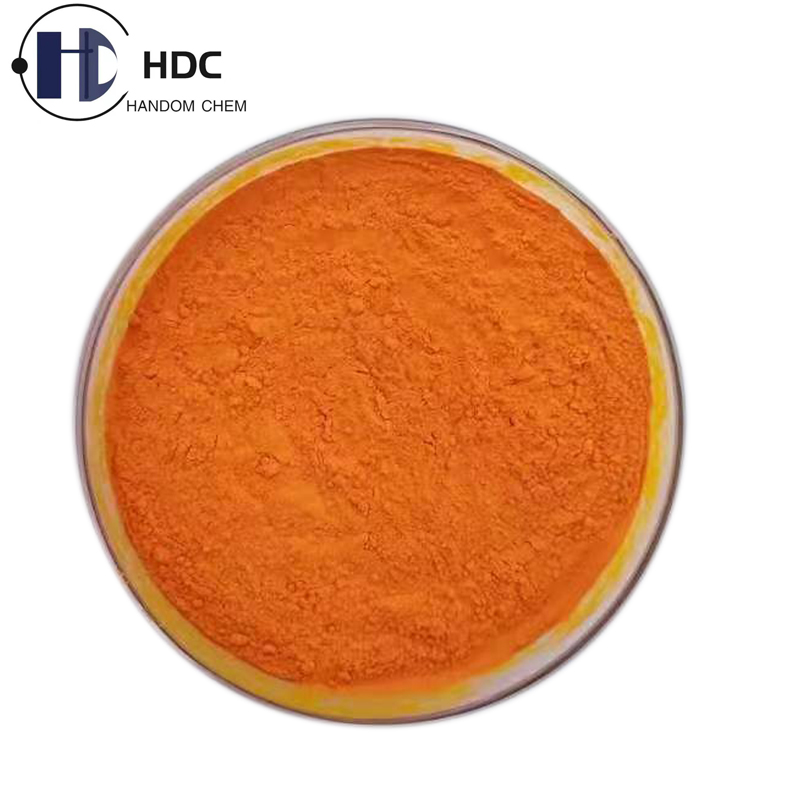
Deficiency:
When riboflavin sodium phosphate is deficient, it can affect the biological oxidation of the body and cause metabolic disorders. The lesions are mostly manifested as inflammation of the mouth, eyes, and external genitalia.
Uses:
1.Riboflavin sodium phosphate can promote cell development and regeneration;
2. Riboflavin sodium phosphate can also promote the continued growth of hair, nails and skin;
3. Riboflavin sodium phosphate can help prevent and eliminate the inflammatory response of the mouth, tongue, and lips, which is also known as oral reproductive syndrome;
4. Riboflavin sodium phosphate can also help reduce eye fatigue and enhance vision;
5. Riboflavin sodium phosphate can affect the body's absorption of iron.
Specifications of our Riboflavin Sodium Phosphate:
| Test Items | Specifications | |
| Appearance | Yellow or orange yellow crystalline powder | |
| Identification | A: Fluorescence Test | The solution is pale greenish yellow by transmitted light, and it exhibits an intense yellowish green fluorescence by reflected light under long-wavelength UV light that disappears upon the addition of mineral acids or alkalies |
| B: Reactions of Sodium Salt & Phosphates | The filtrate gives reaction of sodium and reaction of phosphate | |
| Related Substances | Free Riboflavin | Not more than 6.0% |
| Riboflavin DiPhosphate | Not more than 6.0% | |
| Inorganic Phosphate | Not more than 1% | |
| Specific Optical Rotation | +37.0° ~ +42.0° | |
| pH of 1.0% Solution | 5.0 ~ 6.5 | |
| Lumiflavin | Absorbance: Not more than 0.025 | |
| Sulphated Ash | Not more than 25.0% | |
| Loss on Drying | Not more than 7.5% | |
| Heavy Metals | Not more than 10 ppm | |
| Cadmium (Cd) | Not more than 1 ppm | |
| Arsenic (As) | Not more than 1 ppm | |
| Lead (Pb) | Not more than 2 ppm | |
| Mercury (Hg) | Not more than 0.1 ppm | |
| Assay of Riboflavin (on dried basis) | 73.0% ~ 79.0% | |
| Residual Solvents | Methanol | Not more than 3000 ppm |
| Acetonitrile | Not more than 410 ppm | |
| Pyridine | Not more than 200 ppm | |
| Microbial Test | Total Aerobic Microbial Count | Not more than 1000 CFU/g |
| Yeasts & Moulds | Not more than 100 CFU/g | |
| Escherichia coli | Negative/g | |
| Salmonella | Negative/g | |
| Staphylococcus aureus | Negative/g | |
Reference Standard:
Conforms to USP43 standard.
Packaging:
1kg/Aluminum Foil Bag, 5kg/Carton, 25kg/Fibre Drum or according to the specific requirements from customers.
Storage Conditions:
Riboflavin sodium phosphate should be stored in airtight containers at a temperature of 15℃~30℃; protected from sunlight, heat and moisture.
Shelf Life:
24 months if stored under above conditions.



